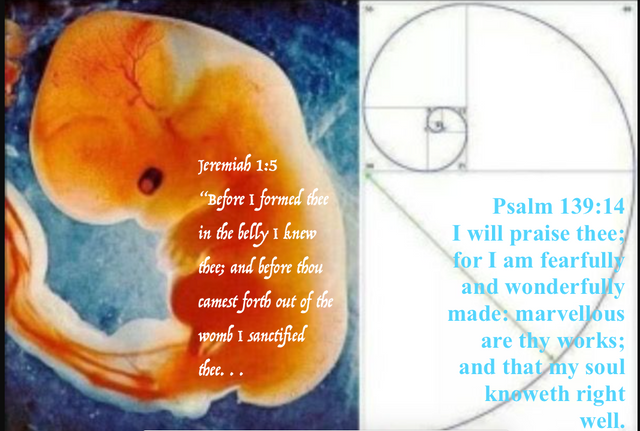
"If you only knew the magnificence of the 3, 6 and 9, then you would have a key to the universe."– Nikola Tesla
Nikola Tesla revealed that an earthquake which drew police and ambulances to the region of his laboratory at 48 E. Houston St., New York, in 1898, was the result of a little machine he was experimenting with at the time which”you could put in your overcoat pocket.”
The bewildered newspapermen pounced upon this as at least one thing they could understand and Nikola Tesla, “the father of modern electricity” told what had happened as follows:
Tesla stated, “I was experimenting with vibrations. I had one of my machines going and I wanted to see if I could get it in tune with the vibration of the building. I put it up notch after notch. There was a peculiar cracking sound. I asked my assistants where did the sound come from. They did not know. I put the machine up a few more notches. There was a louder cracking sound. I knew I was approaching the vibration of the steel building. I pushed the machine a little higher. “Suddenly all the heavy machinery in the place was flying around. I grabbed a hammer and broke the machine. The building would have been about our ears in another few minutes. Outside in the street there was pandemonium. The police and ambulances arrived. I told my assistants to say nothing. We told the police it must have been an earthquake. That’s all they ever knew about it.”
Some shrewd reporter asked Dr. Tesla at this point what he would need to destroy the Empire State Building and the doctor replied: “Vibration will do anything. It would only be necessary to step up the vibrations of the machine to fit the natural vibration of the building and the building would come crashing down. That’s why soldiers break step crossing a bridge.”
“On the occasion of his annual birthday celebration interview by the press on July 10, 1935 in his suite at the Hotel New Yorker, Tesla announced a method of transmitting mechanical energy accurately with minimal loss over any terrestrial distance, including a related new means of communication and a method, he claimed, which would facilitate the unerring location of underground mineral deposits. At that time he recalled the earth-trembling “quake” that brought police and ambulances rushing to the scene of his Houston Street laboratory while an experiment was in progress with one of his mechanical oscillators…”
Nikola Tesla WAITED 37 YEARS to brag of the earthquake incident in 1898, but THE VERY NEXT YEAR in 1899 he dropped everything an went out west to Colorado Springs. IN A TRANSATLANTIC RACE TO BROADCAST AND RECEIVE RADIO SIGNAL, ON THE WORLD STAGE, HE DROPPED EVERYTHING THE NEXT YEAR…AFTER MAKING EARTHQUAKES AND WENT WEST?
He wanted to send power not signal and SEND POWER HE DID. THIS IS WHY MARCONI WAS ABLE TO PILFER HIM OF RADIO IN THE FIRST PLACE AND WHY THE U.S. SUPREME COURT REVERSED MARCONI PATENTS IN 1943 RIGHT AFTER TESLA DIED WITH…
YOU GUESSED IT…
U.S. SUPREME COURT DECISION #369.
What are the chances it would be decision # 3 – 6 – 9 ?
At least one in three hundred an sixty nine. RIGHT?
Nikola Tesla caused the September 1899 Cape Yakataga and Yakutat Bay earthquakes in Alaska from Colorado Springs.
On…
September 3, 1899 [ 9, 3, 9]
September 6, 1899 [ 9, 6, 9]
September 9, 1899 [ 9, 9, 9]
“If you only knew the magnificence of the three, the six and the nine… then you would have a key to the universe.” -Nikola Tesla
(AFTER CAUSING THREE EARTHQUAKES)
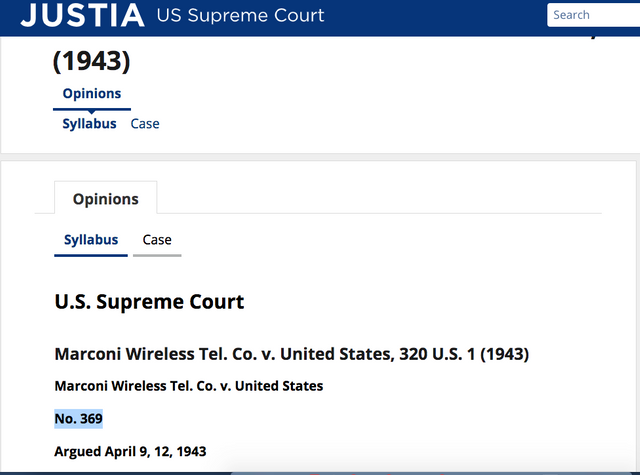
As per Justia,
U.S. Supreme Court
Marconi Wireless Tel. Co. v. United States, 320 U.S. 1 (1943)
Marconi Wireless Tel. Co. v. United States
No. 369
Argued April 9, 12, 1943
Decided June 21, 1943320 U.S. 1ast|>*
320 U.S. 1
The broad claims of the Marconi Patent No. 763,772, for improvements in apparatus for wireless telegraphy -- briefly, for a structure and arrangement of four high-frequency circuits with means of independently adjusting each so that all four may be brought into electrical resonance with one another -- held invalid because anticipated. P. 320 U. S. 38.
Merely making a known element of a known combination adjustable by a means of adjustment known to the art, when no new or unexpected result is obtained, is not invention. P. 320 U. S. 32.
As between two inventors, priority of invention will be awarded to the one who by satisfying proof can show that he first conceived of the invention. P. 320 U. S. 34.
Commercial success achieved by the later inventor and patentee cannot save his patent from the defense of anticipation by a prior inventor. P. 320 U. S. 35.
U.S. Supreme Court
Marconi Wireless Tel. Co. v. United States, 320 U.S. 1 (1943)
Marconi Wireless Tel. Co. v. United States
No. 369
Argued April 9, 12, 1943
Decided June 21, 1943320 U.S. 1ast|>*
320 U.S. 1
- The broad claims of the Marconi Patent No. 763,772, for improvements in apparatus for wireless telegraphy -- briefly, for a structure and arrangement of four high-frequency circuits with means of independently adjusting each so that all four may be brought into electrical resonance with one another -- held invalid because anticipated. P. 320 U. S. 38.
Marconi showed no invention over Stone (Patent No. 714,756) by making the tuning of his antenna circuit adjustable, or by using Lodge's (Patent No. 609, 154) variable inductance for that purpose. Whether Stone's patent involved invention is not here determined.
Merely making a known element of a known combination adjustable by a means of adjustment known to the art, when no new or unexpected result is obtained, is not invention. P. 320 U. S. 32.
As between two inventors, priority of invention will be awarded to the one who by satisfying proof can show that he first conceived of the invention. P. 320 U. S. 34.
Commercial success achieved by the later inventor and patentee cannot save his patent from the defense of anticipation by a prior inventor. P. 320 U. S. 35.
on petition of the Marconi Company in No. 369, to review the judgment of the Court of Claims holding invalid the claims in suit, other than Claim 16, of the Marconi patent, and holding the Fleming patent invalid and not infringed, and on petition of the Government in No. 373, to review the decision allowing recovery for infringement of Claim 16 of the Marconi patent. No review was sought by either party of so much of the court's judgment as sustained the Lodge patent and held the first Marconi reissue patent not infringed.
Marconi Patent No. 763,772
This patent, granted June 28, 1904, on an application filed November 10, 1900, and assigned to the Marconi Company on March 6, 1905, [Footnote 1] is for improvements in apparatus for wireless telegraphy by means of Hertzian oscillations or electrical waves. In wireless telegraphy, signals given by means of controlled electrical pulsations are transmitted through the ether by means of the so-called Hertzian or radio waves. Hertzian waves are electrical oscillations which travel with the speed of light and have varying wave lengths and consequent frequencies intermediate between the frequency ranges of light and sound waves. The transmitting apparatus used for sending the signals is capable, when actuated by a telegraph key or other signaling device, of producing, for short periods of variable lengths, electrical oscillations of radio frequency (over 10,000 cycles per second) in an antenna or open circuit from which the oscillations are radiated to a distant receiving apparatus. The receiver has an open antenna circuit which is electrically responsive
Page 320 U. S. 5
to the transmitted waves and is capable of using those responses to actuate by means of a relay or amplifier any convenient form of signaling apparatus for making audible an electrically transmitted signal, such as a telegraph sounder or a loudspeaker. In brief, signals at the transmitter are utilized to control high frequency electrical oscillations which are radiated by an antenna through the ether to the distant receiver and there produce an audible or visible signal.
Long before Marconi's application for this patent, the scientific principles of which he made use were well understood, and the particular appliances constituting elements in the apparatus combination which he claimed were well known. About seventy years ago, Clerk Maxwell described the scientific theory of wireless communication through the transmission of electrical energy by ether waves. [Footnote 6] Between 1878 and 1890, Hertz devised apparatus for achieving that result which was described by de Tunzelmann in a series of articles published in the London
Marconi's original patent No. 586,193, which was granted July 13, 1897, and became reissue No. 11,913, disclosed a two-circuit system for the transmission and reception of Hertzian waves. The transmitter comprised an antenna circuit connected at one end to an aerial plate and at the other to the ground, and containing a spark gap. To the knobs of the spark gap was connected a transformer whose secondary was connected with a source of current and a signaling key. The low frequency current thereby induced in the antenna circuit was caused to discharge through the spark gap, producing the high frequency oscillations which were radiated by the antenna. The receive similarly contained an antenna circuit between an elevated plate and the ground, in which
Page 320 U. S. 14
a coherer was directly connected. Marconi claimed the construction of transmitter and receiver so as to be resonant to the same frequency, and described means of doing so by careful determination of the size of the aerial plates.
The Tesla patent No. 645,576, applied for September 2, 1897, and allowed March 20, 1900, disclosed a four-circuit system having two circuits, each at transmitter and receiver, and recommended that all four circuits be tuned to the same frequency. Tesla's apparatus was devised primarily for the transmission of energy to any form of energy-consuming device by using the rarified atmosphere at high elevations as a conductor when subjected to the electrical pressure of a very high voltage. But he also recognized that his apparatus could, without change, be used for wireless communication, which is dependent upon the transmission of electrical energy. His specifications declare:
"The apparatus which I have shown will obviously have many other valuable uses -- as, for instance, when it is desired to transmit intelligible messages to great distances. . . . [Footnote 11]"
Tesla's specifications disclosed an arrangement of four circuits, an open antenna circuit coupled, through a transformer, to a closed charging circuit at the transmitter, and an open antenna circuit at the receiver similarly coupled to a closed detector circuit. His patent also instructed
Page 320 U. S. 15
those skilled in the art that the open and closed circuits in the transmitting system and in the receiving system should be in electrical resonance with each other. His specifications state that the "primary and secondary circuits in the transmitting apparatus" are "carefully synchronized." They describe the method of achieving this by adjusting the length of wire in the secondary winding of the oscillation transformer in the transmitter, and similarly in the receiver, so that "the points of highest potential are made to coincide with the elevated terminals" of the antenna -- i.e., so that the antenna circuit will be resonant to the frequency developed in the charging circuit of the transmitter. The specifications further state that
"the results were particularly satisfactory when the primary coil or system A' with its secondary C' [of the receiver] was carefully adjusted so as to vibrate in synchronism with the transmitting coil or system AC."
Tesla thus anticipated the following features of the Marconi patent: a charging circuit in the transmitter for causing oscillations of the desired frequency, coupled, through a transformer, with the open antenna circuit, and the synchronization of the two circuits by the proper disposition of the inductance in either the closed or the antenna circuit or both. By this and the added disclosure of the two-circuit arrangement in the receiver with similar adjustment, he anticipated the four-circuit tuned
Page 320 U. S. 16
combination of Marconi. A feature of the Marconi combination not shown by Tesla was the use of a variable inductance as a means of adjusting the tuning the antenna circuit of transmitter and receiver. This was developed by Lodge after Tesla's patent, but before the Marconi patent in suit. Stone said that
"the vibrations consist of a simple harmonic vibration of lower period than all the others, known as the fundamental with a great variety of superimposed simple harmonics of higher periodicity superimposed thereon."
And he says that the oscillations developed in the charging circuit of his system "induce corresponding oscillations in the vertical wire," which are "virtually" forced vibrations, and "practically independent, as regards their frequency, of the constants of the second circuit in which they are induced" -- a plain recognition that the antenna circuit has electromagnetic constants which affect its natural periodicity, and that that natural periodicity does have some effect on the frequency of the vibrations impressed upon the antenna circuit. [Footnote 14]
Stone's patent, [Footnote 16] granted a year and a half before Marconi -- although after Marconi's application was filed -- makes explicit, as the patent law permits, what was implicit in Stone's application. By amendments to his specifications made April 8, 1902, he recommended that the frequency impressed upon the vertical conductor at the transmitter "may or may not be the same as the natural period or fundamental of such conductor," and that the antenna circuit at the transmitter
"may with advantage be so constructed as to be highly resonant to a particular frequency, and the harmonic vibrations impressed thereon may with advantage be of that frequency."
Since no invention over Stone was involved in tuning the antenna circuits, neither Marconi nor Stone made an invention by providing adjustable tuning of any of the circuits or by employing Lodge's variable inductance as a means of adjusting the tuning of the resonant four circuit arrangement earlier disclosed by Stone's application and patented by him. No invention was involved in employing the Lodge variable inductance for tuning
Page 320 U. S. 33
empirically, though the best general proportions may be determined mathematically."
Stone disclosed his invention to others, and, in January, 1900, described it to his class at the Massachusetts Institute of Technology. Before 1900, he was diligent in obtaining capital to promote his invention. Early in 1901, a syndicate was organized to finance laboratory experiments. The Stone Telegraph & Telephone Co. was organized in December, 1901. It constructed several experimental stations in 1902 and 1903; beginning in 1904
Page 320 U. S. 34
or 1905, it built wireless stations and sold apparatus, equipped a Navy collier and some battleships, and it applied for a large number of patents. The apparatus used in the stations is described by Stone's testimony in this suit as having resonant open and closed circuits loosely coupled inductively to each other at both the transmitter and receiver, and all tuned to the same wavelength, as described in his letters to Baker and his patent.
None of these courts considered the Stone patent or his letters. All rest their findings of invention on Marconi's disclosure of a four-circuit system and on his tuning of the four circuits, in the
Page 320 U. S. 37
sense of rendering them resonant to the same frequency, in both of which respects Stone anticipated Marconi, as we have seen.
Marconi's reputation as the man who first achieved successful radio transmission rests on his original patent, which became reissue No. 11,913, and which is not here
Page 320 U. S. 38
in question. That reputation, however well deserved, does not entitle him to a patent for every later improvement which he claims in the radio field. Patent cases, like others, must be decided not by weighing the reputations of the litigations, but by careful study of the merits of their respective contentions and proofs. As the result of such a study, we are forced to conclude, without undertaking to determine whether Stone's patent involved invention, that the Court of Claims was right in deciding that Stone anticipated Marconi, and that Marconi's patent did not disclose invention over Stone. Hence, the judgment below holding invalid the broad claims of the Marconi patent must be affirmed. In view of our interpretation of the Stone application and patent, we need not consider the correctness of the court's conclusion that, even if Stone's disclosures should be read as failing to direct that the antenna circuits be made resonant to a particular frequency, Marconi's patent involved no invention over Lodge, Tesla, and Stone.
"37. At a receiving station in a system of wireless telegraphy employing electrical oscillations of high frequency, a detector comprising a vacuous vessel, two conductors adjacent to but not touching each other in the vessel, means for heating one of the conductors, a circuit outside of the vessel connecting the two conductors, means for detecting a continuous current in the circuit, and means for impressing upon the circuit the received oscillations."
The current applied to the filament or cathode by the battery sets up a flow of electrons (negative electric charges) from the heated cathode, which are attracted to the cold plate or anode when the latter is positively charged. When an alternating current is set up in the circuit containing the cathode, anode, and secondary of the transformer, the electronic discharge from the cathode closes the circuit and permits a continuous flow of electricity through it when the phase of the current is such than the anode is positively charged, while preventing any flow of current through the tube when the anode is negatively charged. The alternating current is thus rectified so as to produce a current flowing only in one direction. See Deforest Radio Co. v. General Electric Co., 283 U. S. 664; Radio Corp. v. Radio Laboratories, 293 U. S. 1; Detrola Radio & Television Corp. v. Hazeltine Corp., 313 U. S. 259.
Claims 1 and 37 of the Fleming patent are identical in their structural elements. Both claim the vacuum tube,
Page 320 U. S. 53
and the two electrodes connected by a circuit outside the tube, one element being heated. The claims differ only in that Claim 37 includes "means for detecting" the continuous or direct current in the anode-cathode circuit, and "means for impressing upon the circuit the received oscillations" from the transformer coil of the antenna circuit.
The earliest date asserted for Fleming's invention, as limited by the disclaimer, is November 16, 1904. Twenty years before, on October 21, 1884, Edison had secured United States Patent No. 307,031. In his specifications, he stated:
"I have discovered that, if a conducting substance is interposed anywhere in the vacuous space within the globe of an incandescent electric lamp, and said conducting substance is connected outside of the lamp with one terminal, preferably the positive one, of the incandescent conductor, a portion of the current will, when the lamp is in operation,
Page 320 U. S. 54
pass through the shunt circuit thus formed, which shunt includes a portion of the vacuous space within the lamp. This current I have found to be proportional to the degree of incandescence of the conductor or candle-power of the lamp."
Edison proposed to use this discovery as a means of "indicating, variations in the electromotive force in an electric circuit" by connecting a lamp thus equipped at a point where the current was to be measured. The drawings of his patent show an electric circuit, including a filament (cathode) and a plate (anode), both "in the vacuous space within the globe" -- an electric light bulb. The shunt circuit extends from the place through a galvanometer to the filament. His specifications disclose that the vacuous space within the globe is a conductor of current between the plate anode and the filament; that the strength of the current in the filament-to-plate circuit through the vacuum depends upon the degree of incandescence at the filament, and that the plate anode is preferably connected to the positive side of the current supply. The claims of the patent are for the combination of the filament, plate, and interconnecting circuit, including the galvanometer. Claim 5, a typical claim, reads as follows:
"The combination, with an incandescent electric lamp, of a circuit having one terminal in the vacuous space within the globe of said lamp, and the other connected with one side of the lamp circuit, and electrically controlled or operated apparatus in said circuit, substantially as set forth."
On January 9, 1890, ten years before Fleming filed his application, he stated in a paper read before the Royal Society of London:
"It has been known for some time that, if a platinum plate or wire is sealed through the glass bulb of an ordinary carbon filament incandescent lamp, this metallic plate being quite out of contact with the carbon conductor, a sensitive galvanometer connected between this insulated metal plate enclosed in the vacuum and the external positive electrode of the lamp indicates a current of some milliamperes passing through it when the lamp is set in action, but the same instrument, when connected between the negative electrode of the lamp and the insulated metal plate, indicates no sensible current. This phenomenon in carbon incandescent lamps was first observed by Mr. Edison, in 1884, and further examined by Mr. W. H. Preece, in 1885."
Proceedings of the Royal Society of London, vol. 47, pp. 118, 119.
Fleming's 1890 paper further pointed out that the vacuous space "possesses a curious unilateral conductivity" -- that is, it permits current to "flow across the vacuous space from the hot carbon [cathode] to the cooler metal plate [anode], but not in the reverse direction." Id., 122.
Page 320 U. S. 56
He noted the ability of the tube to act as a rectifier of alternating current, saying:
"When the lamp is actuated by an alternating current, a continuous current is found flowing through a galvanometer, connected between the insulated plate and either terminal of the lamp. The direction of the current through the galvanometer is such as to show that negative electricity is flowing from the plate through the galvanometer to the lamp terminal."
Id., 120.
Fleming's paper thus noted, contrary to the then popular conception, that it is negative electricity which flows from cathode to anode, but he emphasized that even this had been a part of general scientific knowledge, as follows:
"The effect of heating the negative electrode in facilitating discharge through vacuous spaces has previously been described by W. Hittorf ('Annelen der Physik und Chemie,' vol. 21, 1884, p. 90-139), and it is abundantly confirmed by the above experiments. We may say that a vacuous space bounded by two electrodes -- one incandescent and the other cold -- possesses a unilateral conductivity for electric discharge when these electrodes are within a distance of the mean free path of projection of the molecules which the impressed electromotive force can detach and send off from the hot negative electrode."
"This unilateral conductivity of vacuous spaces having unequally heated electrodes has been examined by MM. Elster and Geitel (see 'Wiedemann's Annalen,' vol. 38, 1889, p. 40), and also by Goldstein ('Wied.Ann.,' vol. 24, 1885, p. 83), who, in experiments of various kinds, have demonstrated that, when an electric discharge across a vacuous space takes place from a carbon conductor to another electrode, the discharge takes place at lower electromotive force when the carbon conductor is the negative electrode and is rendered incandescent."
[Footnote 1]
On November 20, 1919, The Marconi Company assigned to the Radio Corporation of America all of its assets, including the patents here in suit, but reserved, and agreed to prosecute, the present claims against the United States, on which it had instituted suit on July 29, 1916.
Marconi was granted eight other United States patents for wireless apparatus on applications filed between the filing dates of Nos. 586, 193 and 763,772. They are Nos. 624,516, 627,650, 647,007, 647,008, 647,009, 650, 109, 650,110, 668,315.
[Footnote 10]
Martin, Invention, Researches, and Writings of Nikola Tesla, pp. 346-348.
[Footnote 11]
Tesla's specifications state that the current should preferably be "of very considerable frequency." In describing apparatus used experimentally by him, the specifications state that the oscillations are generated in the charging circuit by the periodic discharge of a condenser by means of "a mechanically operated break," a means whose effects are similar to those of the spark gap generally used at this period in the radio art. He further states that the inductance of the charging circuit is so calculated that the
"primary circuit vibrates generally according to adjustment, from two hundred and thirty thousand to two hundred and fifty thousand times per second."
The range of radio frequencies in use in 1917 was said by a witness for the plaintiff to extend from 30,000 to 1,500,000 cycles per second. The range of frequencies allocated for radio use by the International Telecommunication Convention, proclaimed June 27, 1934, 49 Stat. 2391, 2459, is from 10 to 60,000 kilocycles (10,000 to 60,000,000 cycles) per second, and the spectrum of waves over which the Federal Communications Commission currently exercises jurisdiction extends from 10 to 500,000 kilocycles. Code of Federal Regulations, Title 47, Ch. I, § 2.71. Thus, Tesla's apparatus was intended to operate at radio frequencies.
[Footnote 12]
Marconi's patent No. 627,650, of June 27, 1899, similarly showed a two-circuit receiving system, in which the coherer was placed in a closed circuit which was inductively coupled with a tuned antenna circuit. The Court of Claims found, however, that this patent did not clearly disclose the desirability of tuning both circuits.
[Footnote 17]
This is borne out by the subsequent letter from Stone to the Commissioner of Patents dated June 7, 1902. Stone there refers to a letter by the Patent Office saying that the statement that a simple harmonic wave developed in the closed circuit "can be transferred to the elevated conductor and from the latter to the ether without change of form" is "an argument the soundness of which the Office has no means of testing." Stone replied with arguments to show that the vibrations radiated by the antenna circuit would be sufficiently pure for practical purposes either if the antenna circuit were aperiodic or if it had a fundamental which was of the same frequency as that of the forced vibrations impressed upon it, although they would not be pure if the antenna circuit had a marked natural periodicity and was untuned. This letter, while somewhat later in date than the amendments, reinforces the conclusion that the purpose of those amendments was to explain more fully the details of theory and practice necessary to the success of the idea underlying Stone's original invention.
[Footnote 18]
It is not without significance that Marconi's application was at one time rejected by the Patent Office because anticipated by Stone, and was ultimately allowed, on renewal of his application, on the sole ground that Marconi showed the use of a variable inductance as a means of tuning the antenna circuits, whereas Stone, in the opinion of the Examiner, tuned his antenna circuits by adjusting the length of the aerial conductor. All of Marconi's claims which included that element were allowed, and the Examiner stated that the remaining claims would be allowed if amended to include a variable inductance. Apparently through oversight, Claims 10 and 11, which failed to include that element, were included in the patent as granted. In allowing these claims, the Examiner made no reference to Lodge's prior disclosure of a variable inductance in the antenna circuit.
[Footnote 19]
See footnote 13 supra.
[Footnote 20]
Even if the lack of invention in Marconi's improvement over Stone -- making adjustable the tuning of the antenna circuits which Stone had said should be tuned -- could be said to be in sufficient doubt, so that commercial success could aid in resolving the doubt, Thropp's Sons Co. v. Sieberling, 264 U. S. 320, 264 U. S. 330; DeForest Radio Co. v. Electric Co., 283 U. S. 664, 283 U. S. 685; Altoona Public Theaters v. Tri-Ergon Corp., 294 U. S. 477, 294 U. S. 488, it has not been established that the alleged improvement contributed in any material degree to that success. Compare Altoona Publix Theaters v. Tri-Ergon Corp., supra. Marconi's specifications disclose a large number of details of construction, none of which is claimed as invention in this patent, in which his apparatus differed from, and may have been greatly superior to, Stone's. Many of these formed the subject of prior patents.
After his application for this patent, as well as before, Marconi made or adopted a great number of improvements in his system of wireless telegraphy. Two of his engineers have written that a major factor in his successful transmission across the Atlantic in December, 1901, was the use of much greater power and higher antennae than had previously been attempted, an improvement in no way suggested by the patent here in suit. Fleming, Electric Wave Telegraphy, 449-53; Vyvyan, Wireless Over Thirty Years, 22-33. Indeed, both are agreed that, in the actual transmission across the Atlantic, tuning played no part; the receiver antenna consisted of a wire suspended by a kite which rose and fell with the wind, varying the capacity so much as to make tuning impossible. Ibid.
By 1913, when he testified in the National Electric Signaling Co. case, that, "due to the utilization of the invention" of this patent, he had successfully transmitted messages 6,600 miles, he had, after almost continuous experimentation, further increased the power used, developed new apparatus capable of use with heavy power, enlarged his antennae, and adopted the use of horizontal, "directional" antennae, and made use of improved types of spark gaps and detecting apparatus, including the Fleming cathode-anode tube, the crystal detector, and sound recording of the signals -- to mention but a few of the improvements made. He had also discovered that much greater distances could be attained at night. See Vyvyan, supra, 34-47, 55-60. The success attained by the apparatus developed by Marconi and his fellow engineers by continuous experimentation over a period of years -- however relevant it might be in resolving doubts whether the basic four-circuit, tuned system disclosed by Marconi, and before him by Stone, involved invention -- cannot, without further proof, be attributed in significant degree to any particular one of the many improvements made by Marconi over Stone during a period of years. The fact that Marconi's apparatus as a whole was successful does not entitle him to receive a patent for every feature of its structure.
[Footnote 21]
A preliminary injunction restraining infringement was entered in Marconi Wireless Tel. Co. v. De Forest Tel. & Tel. Co., 225 F. 65, aff'd, 225 F. 373, both courts, without independent discussion of the validity of the patent, determining that the decision in the National Signaling Co. case justified the grant of preliminary relief. A preliminary injunction was also granted in Marconi Wireless Tel. Co. v. Atlantic Communication Co., an action brought in the Eastern District of New York.
Stone's letters were introduced in evidence in the Atlantic Communications Co., case and the Kilbourne & Clark case. His deposition in the latter case, taken February 2, and 29, 1916, was incorporated in the record in this case. He there testified that he had refrained from producing proofs of the priority of his invention when called upon to testify in prior litigation in 1911 and 1914 because he wished the priority of his invention to be established by the owners of the patent -- the Stone Telegraph Co. and its bondholders -- in order to be sure that a bona fide defense would be made. He said that, by May, 1915, when he testified in the Atlantic Communications Co. case, he had concluded that the owners of the patent were not in a financial position to litigate, and that the Atlantic Co. "would make a bona fide Stone defense."
[Footnote 22]
See note 13 supra. Most of the current in the antenna circuit is said to pass through the condenser shunt, and not through the transformer coil, thus minimizing the effect upon the frequency of vibrations in the antenna circuit of the magnetic stresses set up in the primary of the transformer by the current induced in the secondary.
MR. JUSTICE FRANKFURTER, dissenting in part.
I regret to find myself unable to agree to the Court's conclusion regarding the invalidity of the broad claims of Marconi's patent. Since broad considerations control the significance and assessment of the details on which judgment in the circumstances of a case like this is based, I shall indicate the general direction of my views.
The inescapable fact is that Marconi, in his basic patent, hit upon something that had eluded the best brains of the time working on the problem of wireless communication -- Clerk Maxwell and Sir Oliver Lodge and Nikola Tesla. Genius is a word that ought to be reserved for the rarest of gifts. I am not qualified to say whether Marconi was a genius. Certainly the great eminence of Clerk Maxwell and Sir Oliver Lodge and Nikola Tesla
Page 320 U. S. 63
in the field in which Marconi was working is not questioned. They were, I suppose, men of genius. The fact is that they did not have the "flash" (a current term in patent opinions happily not used in this decision) that begot the idea in Marconi which he gave to the world through the invention embodying the idea. But it is now held that, in the important advance upon his basic patent, Marconi did nothing that had not already been seen and disclosed.
To find in 1943 that what Marconi did really did not promote the progress of science because it had been anticipated is more than a mirage of hindsight. Wireless is so unconscious a part of us, like the automobile to the modern child, that it is almost impossible to imagine ourselves back into the time when Marconi gave to the world what, for us, is part of the order of our universe. And yet, because a judge of unusual capacity for understanding scientific matters is able to demonstrate by a process of intricate ratiocination that anyone could have drawn precisely the inferences that Marconi drew and that Stone hinted at on paper, the Court finds that Marconi's patent was invalid although nobody except Marconi did in fact draw the right inferences that were embodied into a workable boon for mankind. For me, it speaks volumes that it should have taken forty years to reveal the fatal bearing of Stone's relation to Marconi's achievement by a retrospective reading of his application to mean this, rather than that. This is, for me, and I say it with much diffidence, too easy a transition from what was not to what became.
MR. JUSTICE ROBERTS joins in this opinion.
"Considering the exclusive right to invention as given not of natural right, but for the benefit of society, I know well the difficulty of drawing a line between the things which are worth to the public the embarrassment of an exclusive patent and those which are not. As a member of the patent board for several years while the law authorized a board to grant or refuse patents, I saw with what slow progress a system of general rules could be matured. . . . Instead of refusing a patent in the first instance, as the board was authorized to do, the patent now issues of course, subject to be declared void on such principles as should be established by the courts of law. This business, however, is but little analogous to their course of reading, since we might in vain turn over all the lubberly volumes of the law to find a single ray which would lighten the path of the mechanic or the mathematician. It is more within the information of a board of academical professors, and a previous refusal of patent would better guard our citizens against harassment by lawsuits. But England had given it to her judges, and the usual predominancy of her examples carried it to ours."
Thomas Jefferson to Mr. Isaac M'Pherson, August 13, 1813, Works of Thomas Jefferson, Wash. Ed., vol. VI, pp. 181, 182.
"I cannot stop without calling attention to the extraordinary condition of the law which makes it possible for a man without any knowledge of even the rudiments of chemistry to pass upon such questions as these. The inordinate expense of time is the least of the resulting evils, for only a trained chemist is really capable of passing upon such facts -- e.g., in this case, the chemical character of Von Furth's so-called 'zinc compound,' or the presence of inactive organic substances. . . . How long we shall continue to blunder along without the aid of unpartisan and authoritative scientific assistance in the administration of justice no one knows, but all fair persons not conventionalized by provincial legal habits of mind ought, I should think, unite to effect some such advance."
Judge Learned Hand in Parke-Davis & Co. v. H. K. Mulford Co., 189 F. 95, 115.
MR. JUSTICE RUTLEDGE, dissenting in part.
Until now, law [Footnote 2/1] has united with almost universal repute [Footnote 2/2] in acknowledging Marconi as the first to establish wireless telegraphy on a commercial basis. Before his invention, now in issue, [Footnote 2/3] ether-borne communication traveled some eighty miles. He lengthened the arc to 6,000. Whether or not this was "inventive" legally, it was a great and beneficial achievement. [Footnote 2/4] Today, forty years after the event, the Court's decision reduces it to an electrical mechanic's application of mere skill in the art.
Page 320 U. S. 65
By present knowledge, it would be no more. School boys and mechanics now could perform what Marconi did in 1900. But, before then, wizards had tried and failed. The search was at the pinnacle of electrical knowledge. There, seeking, among others, were Tesla, Lodge and Stone, old hands and great ones. With them was Marconi, still young as the company went, [Footnote 2/5] obsessed with youth's zeal for the hunt.
At such an altitude, to work at all with success is to qualify for genius, if that is important. And a short step forward gives evidence of inventive power. For, at that height, a merely slight advance comes through insight only a first-rate mind can produce. This is so whether it comes by years of hard work tracking down the sought secret or by intuition flashed from subconsciousness made fertile by long experience or shorter intensive concentration. At this level and in this company, Marconi worked and won.
Marconi received patents here, in England, and in France. [Footnote 2/6] The American patent was not issued perfunctorily. It came forth only after a long struggle had brought about reversal of the Patent Office's original and later rejections. The application was filed in November,
It is important, in considering the references, to state the parties' contentions concisely. The Government's statement is that they differ over whether Marconi was first to conceive four circuit "tuning" for transmission of sound by Hertzian waves. It says this was taught previously by Tesla, Lodge, and Stone. Petitioner however says none of them taught what Marconi did. It contends that Marconi was the first to accomplish the kind of tuning
Page 320 U. S. 68
he achieved, and in effect urges this was patentably different from other forms found earlier.
Likewise, petitioner does not deny that Stone knew and utilized the principles of tuning, but urges, with respect to the claim he applied them to all of the four circuits, that the only ones tuned in his original application were the closed circuits, and therefore that the antenna circuits were not tuned, although it is not denied that the effects of tuning the closed circuits were reflected in the open ones by what Stone describes as "producing forced simple
Page 320 U. S. 69
harmonic electric vibrations of the same periodicity in an elevated conductor."
The Stone amendments of 1902, made more than a year after Marconi's filing date, admittedly disclose tuning of both the closed and the open circuits, and were made for the purpose of stating expressly the latter effect, claimed to be implicit in the original application. Petitioner denies this was implicit, and argues, in effect, that what Stone originally meant by "producing forced . . . vibrations" was creating the desired effects in the antenna by force, not by tuning, and therefore that the two methods were patentably different.
It seems clear that the parties use the word "tuning" to mean different things, and the ambiguity, if there is one, must be resolved before the crucial questions can be stated with meaning. It will aid, in deciding whether there is ambiguity or only confusion, to consider the term and the possible conceptions it may convey in the light of the problems Marconi and Stone, as well as other references, were seeking to solve.
Marconi had in mind first a specific difficulty, as did the principal references. It arose from what, to the time of his invention, had been a baffling problem in the art. Shortly and simply, it was that an electrical circuit which is a good conserver of energy is a bad radiator and, conversely, a good radiator is a bad conserver of energy. Effective use of Hertzian waves over long distances required both effects. To state the matter differently, Lodge had explained in 1894 the difficulties of fully utilizing the principle of sympathetic resonance in detecting ether waves. To secure this, it was necessary, on the one hand, to discharge a long series of waves of equal or approximately equal length. Such a series can be produced only by a circuit which conserves its energy well -- what Marconi calls a persistent oscillator. On the other hand, for distant detection, the waves must be of substantial
Page 320 U. S. 70
amplitude, and only a circuit which loses its energy rapidly can transmit such waves with maximum efficiency. Obviously, in a single circuit, the two desired effects tend to cancel each other, and therefore to limit the distance of detection. Similar difficulty characterized the receiver, for a good radiator is a good absorber, and that very quality disables it to store up and hold the effect of a train of waves until enough is accumulated to break down the coherer, as detection requires.
Since the difficulty was inherent in a single circuit, whether at one end or the other, Marconi used two in both transmitter and receiver, four in all. In each station, he used one circuit to obtain one of the necessary advantages and the other circuit to secure the other advantage. The antenna (or open) circuits he made "good radiators" (or absorbers). The closed circuits he constructed as "good conservers." By coupling the two at each end loosely, he secured from their combination the dual advantages he sought. At the transmitter, the closed circuit, by virtue of its capacity for conserving energy, gave persistent oscillation, which passed substantially undiminished through the coupling transformer to the "good radiator" open circuit, and from it was discharged with little loss of energy into the ether. Thence it was picked up by the "good absorber" open circuit and passed, without serious loss of energy, through the coupling transformer, into the closed "good conserving" circuit, where it accumulated to break the coherer and give detection.
Moreover, and for present purposes this is the important thing, Marconi brought the closed and open circuits into almost complete harmony by placing variable inductance in each. Through this, the periodicity of the open circuit was adjusted automatically to that of the closed one, and, since the circuits of the receiving station were similarly adjustable, the maximum resonance was secured throughout the system. Marconi thus not only solved
Page 320 U. S. 71
the dilemma of a single circuit arrangement; he attained the maximum of resonance and selectivity by providing in each circuit independent means of tuning.
In 1911, this solution was held inventive, as against Lodge, Marconi's prior patents, Braun, and other references, in Marconi v. British Radio Tel. & Tel. Co., 27 T.L.R. 274. Mr. Justice Parker carefully reviewed the prior art, stated the problem, Marconi's solution, and, in disposing of Braun's specification, concluded it "did not contain even the remotest suggestion of the problem . . . , much less any suggestion bearing on its solution. . . ." As to Lodge, Mr. Justice Parker observed, referring first to Marconi:
". . . It is important to notice that, in the receiver, the mere introduction of two circuits instead of one was no novelty. A figure in Lodge's 1897 patent shows the open circuit of his receiving aerial linked through a transformer with a closed circuit containing the coherer, his idea being, as he states, to leave his receiving aerial to vibrate electrically without disturbance from attached wires. This secondary circuit, as shown, is not tuned to, nor can it be tuned to, the circuit of the aerial. This, in my opinion, is exceedingly strong evidence that Marconi's 1900 invention was not so obvious as to deprive it of subject matter. In the literature quoted, there is no trace of the idea underlying Mr. Marconi's invention, nor, so far as I can see, a single suggestion from which a competent engineer could arrive at this idea."
(Emphasis added.)
It was therefore clearly Mr. Justice Parker's view, in his closer perspective to the origin of the invention and the references he considered, that in none of them, and particularly not in Lodge or Braun, was there anticipation of Marconi's solution.
He did not mean that the references did not apply "the principle of resonance as between transmitter and receiver"
Page 320 U. S. 72
or utilize "the principle of sympathetic resonance for the purpose of detection of ether waves." For he expressly attributed to Lodge, in his 1894 lectures, explanation
"with great exactness [of] the various difficulties attending the full utilization' of that principle. And, in referring to Marconi's first patent, of 1896, the opinion states that Marconi, 'for what it was worth, . . . tuned the two circuits [i.e., the sending and receiving ones] together, as Hertz had done."
(Emphasis added.)
Substantially the same answer may be made to this as Mr. Justice Parker made to the claim based on Lodge. Tuning both circuits, that is, including in each independent means for variable adjustment, was the very gist of Marconi's invention. And it was what made possible the highly successful result. It seems strange that one who saw not only the problem, but the complete solution, should specify only half what was necessary to achieve it, neglecting to mention the other and equally important
Page 320 U. S. 76
half as well, particularly when, as is claimed, the two were so nearly identical except for location. The very omission of explicit statement of so important and, it is claimed, so obvious a feature is evidence it was neither obvious nor conceived. And the force of the omission is magnified by the fact that its author, when he fully recognized its effect, found it necessary to make amendment to include it, after the feature was expressly and fully disclosed by another. Amendment under such circumstances, particularly with respect to a matter which goes to the root, rather than an incident or a detail of the invention, is always to be regarded critically and, when the foundation claimed for it is implicit existence in the original application, as it must be, the clearest and most convincing evidence should be required when the effect is to give priority, by backward relation, over another application intermediately filed.
Apart from the significance of omitting to express a feature so important, I am unable to find convincing evidence the idea was implicit in Stone as he originally filed. His distinction between "natural" and "forced" oscillations seems to me to prove, in the light of his original disclosure, not that "tuning" of the antenna circuit as Marconi required this was implicit, but rather that it was not present in that application at all. It is true he sought, as Marconi did, to make the antenna circuit at the transmitter the source of waves of but a single periodicity, and the same circuit at the receiver an absorber only of the waves so transmitted. But the methods they used were not the same. Stone's method was to provide "what are substantially forced vibrations" in the transmitter's antenna circuit and at the receiver, to impose
"between the vertical conductor [the antenna] . . . and the translating devices [in the closed circuit] [other] resonant circuits attuned to the particular frequency of the electromagnetic waves
Page 320 U. S. 77
which it is desired to have operate the translating devices."
Finally, Stone was no novice. He too was "a very expert person, and one of the best men in the art." National Electric Signaling Co. v. Telefunken Wireless Tel. Co., 209 F. 856, 864. He knew the difference between tuned and untuned circuits, how to describe them, and how to apply them when he wanted to do so. He used this knowledge when he specified including means for tuning in his closed circuit. He did not use it to specify similarly tuning the open one. The omission, in such circumstances, could hardly have been intentional. In my opinion, he deliberately selected an aperiodic aerial, one to which the many receiving circuits his application contemplated could be adjusted and one which would carry to them, from his transmitter's tuned periodicity and by its force alone, what it sent forward. In short, Stone deliberately selected an untuned antenna, a tuned
Page 320 U. S. 80
closed circuit, and controlled the periodicity of both not by independent means in each making them mutually and reciprocally adjustable, but by impressing upon the untuned antenna the forced periodicity of the closed circuit.
In my opinion, therefore, the judgment should be reversed, insofar as it holds Marconi's broad claims invalid.
Footnote 2/3
His earliest American patent, U.S. Patent No. 586,193, granted on July 13, 1897, later becoming Reissue Patent No. 11,913, is not in suit here. That patent did not embrace many of the crucial claims here involved, and its product cannot compare in commercial usefulness with that of the patent in suit.
[Footnote 2/5]
He was only twenty-six years old at the time he applied for the patent in suit, but he had already made substantial contributions to the field.
[Footnote 2/9]
U.S. Patent to Tesla No. 649,621, May 15, 1900, division of 645,576, March 20, 1900 (filed Sept. 2, 1897).
[Footnote 2/12]
Ibid.
[Footnote 2/13]
Tesla in fact did not use Hertzian waves. His idea was to make the ether a conductor for long distances by using extremely high voltage, 20,000,000 to 30,000,000 volts, and extremely high altitudes, 30,000 to 40,000 feet or more, to secure transmission from aerial to aerial. Balloons, with wires attached reaching to the ground, were his suggested aerials. His system was really one for transmitting power for motors, lighting, etc., to "any terrestrial distance," though he incidentally mentions "intelligible messages." As he did not use Hertzian waves, he had no such problem of selectivity as Marconi, Lodge, Stone, and others were working on later.
Is Vortex Math important?
Think Vector
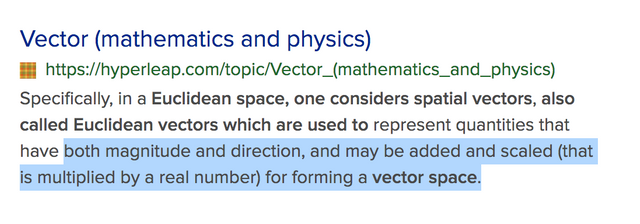
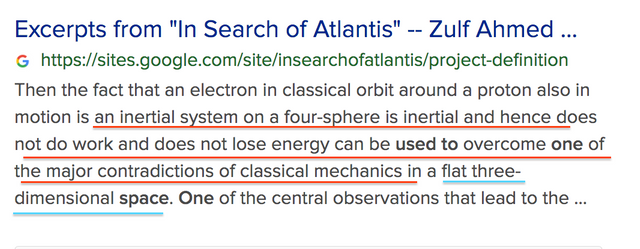
Names are there, Nature's sacred watchwords, they
Were borne aloft in bright emblazonry;
The nations thronged around, and cried aloud,
As with one voice, Truth, liberty, and love!
Suddenly fierce confusion fell from heaven
Among them: there was strife, deceit, and fear:
Tyrants rushed in, and did divide the spoil.
This was the shadow of the truth I saw.
P B Shelley, Prometheus Unbound
For more information on Vectors see Sources at bottom for the Geometry of Electromagnetism ResearchGate dealing with Vectors.
Vortex Mathematics
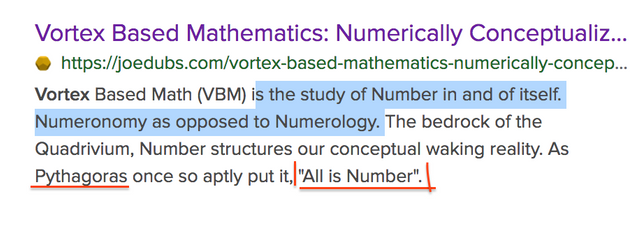


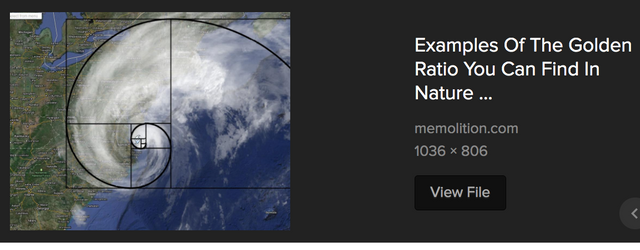
What is Vortex Math based on?
You will recall the Fibonacci Sequence which is utterly beautiful in looking at relationships to numbers in the space time continuum!
The Fibonacci Sequence

They symbol Phi. ..Why is one represented closed and the other not?
You decide!
Golden Ratio
you just start with 0+1=1. And now to get to the
next number in the sequence, you take the sum of that simple equation and add it
to the last number in the equation
So 1+1=2
and then 1+2 = 3.
It's around this point that the ratio
actually starts showing up. As we continue to do this formula, we start
arriving at a set of numbers: 2, 3, 5, 8... and you see what we're doing
we're adding the sum of the equation to the last number in the equation,* and we
arrive at this sequence of numbers. It's interesting that this sequence and
ratio actually remains consistent no matter how long you follow this
mathematical formula. And so this sequence continues to expand outward
around the rate and the ratio of 1 to 1.6
Here is the ratio depicted in line form
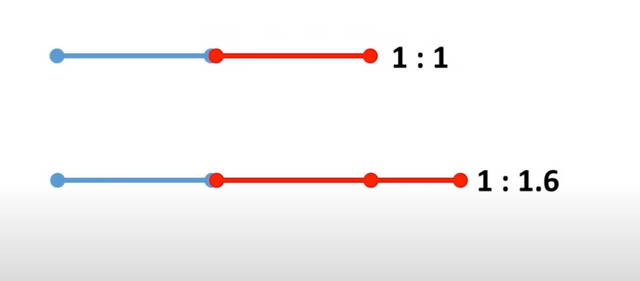
Ratio in rectangle form
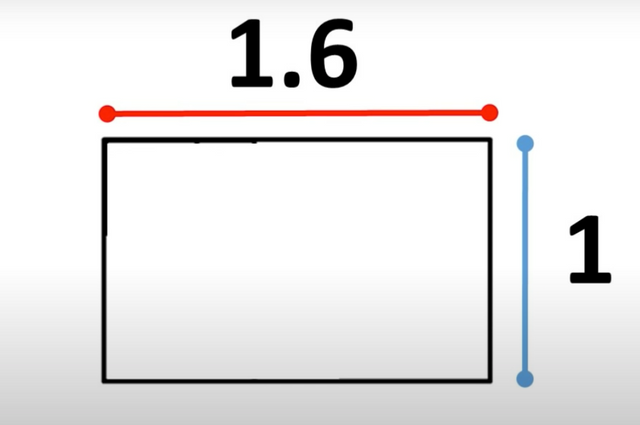
What is you started making tinier points of the golden ratio inside?
What would happen?
Could they eventually become microscopic?
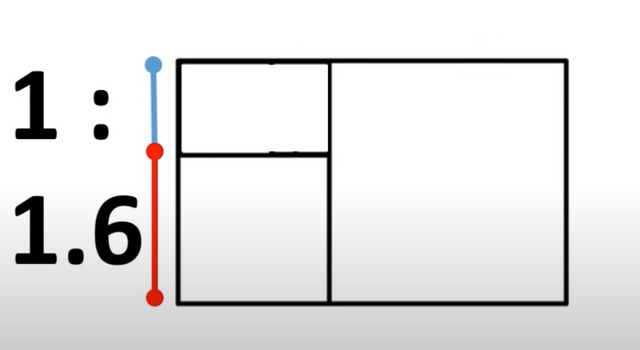
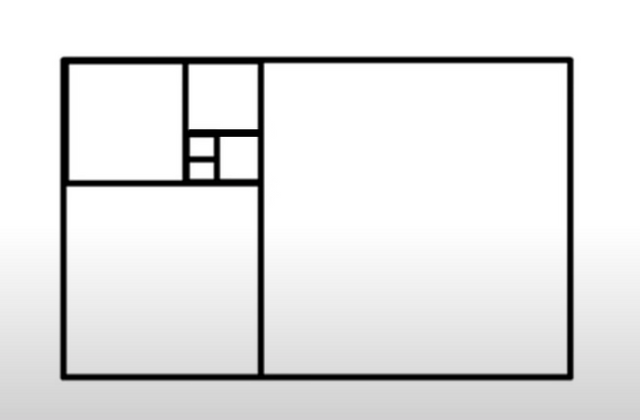
What would a spiral look like as it expands outward at the same measured sequence?
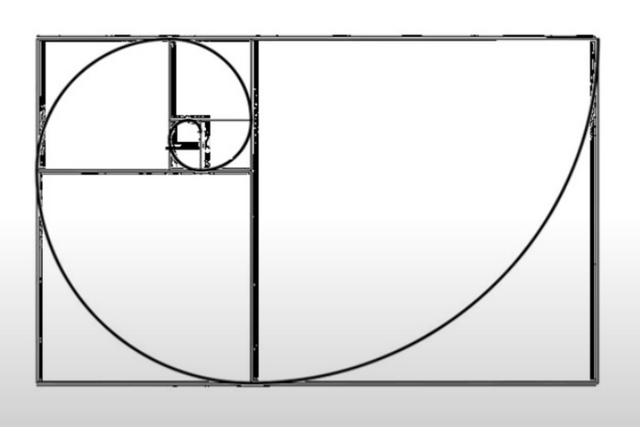
Did you know?
In Nature the Golden Ratio allows the maximum amount of rain water to be directed down to the roots of many trees and plants.
Do you see a lot of the Fibonacci numbers from the sequence in nature like 3,5,8,13. . .?
Think of petals on flowers and the number they show up in.
Think of seeds in an apple.
How about not just on a microscopic or even macroscopic scale
what about on a larger scale?
What about the spirals and turbulence of storms?
Think about tornadoes, hurricanes.
Do they spin in this 1:1.6 ration?
Even waves can be measured using this same sequence.
Now think about the alignment of the planets.
Spirals in the Milky Way Galaxy.
What about in relation to you?
What is the distance from shoulder to elbow, then from elbow to tips of fingers spread out?
How about working in the opposite direction. ..
from fingertips to wrist in relation to wrist to elbow.
1:1.6?
Interesting that a cubit was based upon the measurement of the length of the arm from the elbow to the tip of the middle finger?
You decide.
What are Cubits, qubits used for?
Does God work at the Quantum Level?
Even spacing of your knuckles. ..does it look like 1:1.6?
Is there intelligent design involved?
How about the shape of your ears?
Distance between the pupils of your eyes.
Is the cochlea inside of your ear the Golden Ratio?
What if you take a cross section of the human brain?
What about in the helix of your dna?
How about sound waves and the rhythm of your heartbeat pattern?
Does this bring a Whole New Meaning to. . .
Psalm 139:14
King James Version
14 I will praise thee; for I am fearfully and wonderfully made: marvellous are thy works; and that my soul knoweth right well.
In the Ark of the Covenant and Noah's Ark. ..
You guessed it. . .Measurements exact match to the Golden Ratio
Ideal acoustics in music with the Golden Ratio?
Absolutely!
Are instruments designed using this ratio?
You decide!
The musical notes and scales Do Align with the Fibonacci Sequence!
How about Architecture, Art and Designs?
That's right. . .incorporated into all that is Artistique!
Is this why Leonardo de Vinci and Michelangelo were obsessed with it?
Back at the Universities I attended I had the opportunity to study this breakdown in their artwork with various professors. Stunning!
Length" of the vector [although the quantity may not be a length, it may be a velocity, acceleration, force, etc.]
Some advanced applications of vectors in physics require using a three-dimensional space, in which the axes are x, y, and z.
In mathematics and physics, a vector is an element of a vector space.
For many specific vector spaces, the vectors have received specific names, which are listed below.
Historically, vectors were introduced in geometry and physics (typically in mechanics) before the formalization of the concept of vector space. Therefore, one often talks about vectors without specifying the vector space to which they belong. Specifically, in a Euclidean space, one considers spatial vectors, also called Euclidean vectors which are used to represent quantities that have both magnitude and direction, and may be added, subtracted and scaled (i.e. multiplied by a real number) for forming a vector space.
"Mathematics is the language with which God has written the universe," Galileo.
Vortex math is a system of numbers which explains the essence of form as a sphere with a vortex. The numbers reveal a spiral line and a curved plane. The numbers in this spiral line describe the form of a vortex , the vortex describes an inward contraction with its equal expansion which is the inner form of a torus . Vortex math numbers illustrate the contracting and the expanding elements of the external physical plane and they also illustrate the internal and subtle aspect of consciousness.
Is zero the contractive vortex? The zero / O dynamic is gravity. Contractive vortex gravity plus torsion is the “spin the spiral and the orbit of all” . The inward spiral vortex of water pulled downward into a drain is the contractive O vortex. Marko Rodin conscious vortex math“One who wants to expand must first contract “.
All external expansion is preceded by an inner contraction . Marko has said that all creation develops from the inside to the outside , from the inward to the outward . Everything manifest is an after effect of the O energetic. Black coal when compressed by the gravity of O becomes a diamond .
Gravity and magnetism are physical forces , but these same words can also imply the personal attractive qualities of gravity and magnetism . Charisma is personal gravity and personal magnetism . In this way, personal conscious charisma is the all-attractive primary aspect and it is central and internal.
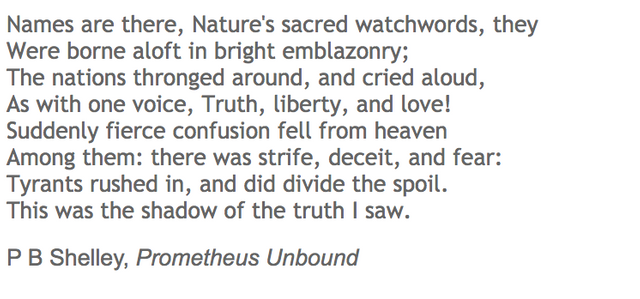
In Search of Atlantis Project
We will work instead work with the hypothesis that the universe is four dimensional and hidden symmetries of electromagnetism play a decisive role in protein folding. This is against a background where the dominant hypotheses include seeking codes within the DNA for folding. At this early stage of our approach, we appeal to parsimony for this direction: parsimony at the scale of physics which leads to the hypothesis of SU(2) electromagnetism and then the expectation that such a force would have a decisive role in the protein folding. In a sense this direction is in line with the movement towards folding as a consequence only of physical chemistry considerations.
The idea that the universe has higher than three macroscopic dimensions goes back to the nineteenth century, and Riemann had conceived the notion of hyperspace for example.
Who is the ONE that made us Free under Universal Law?
Archived Facebook post,
https://www.facebook.com/melissa.mcgarity.14/posts/10224154554186099
Sources
https://supreme.justia.com/cases/federal/us/320/1/
https://blog.world-mysteries.com/science/why-did-tesla-say-that-369-was-the-key-to-the-universe/
https://www.gothamcenter.org/blog/places-of-invention-nikola-teslas-life-in-new-york
https://hyperleap.com/topic/Vector_(mathematics_and_physics)
https://sites.google.com/site/insearchofatlantis/project-definition
https://www.researchgate.net/publication/254470625_On_the_geometry_of_electromagnetism
How the nefarious use it
https://www.academia.edu/39732569/Introduction_to_Data_Mining_Instructors_Solution_Manual_Pang_Ning_Tan
https://www.biorxiv.org/content/10.1101/696724v2.full
https://memolition.com/2014/07/17/examples-of-the-golden-ratio-you-can-find-in-nature/